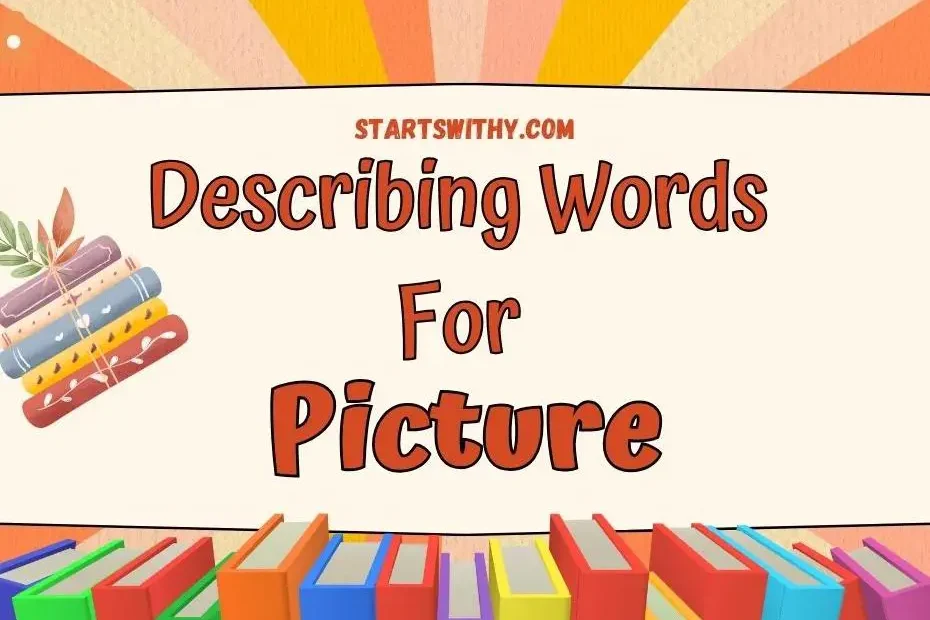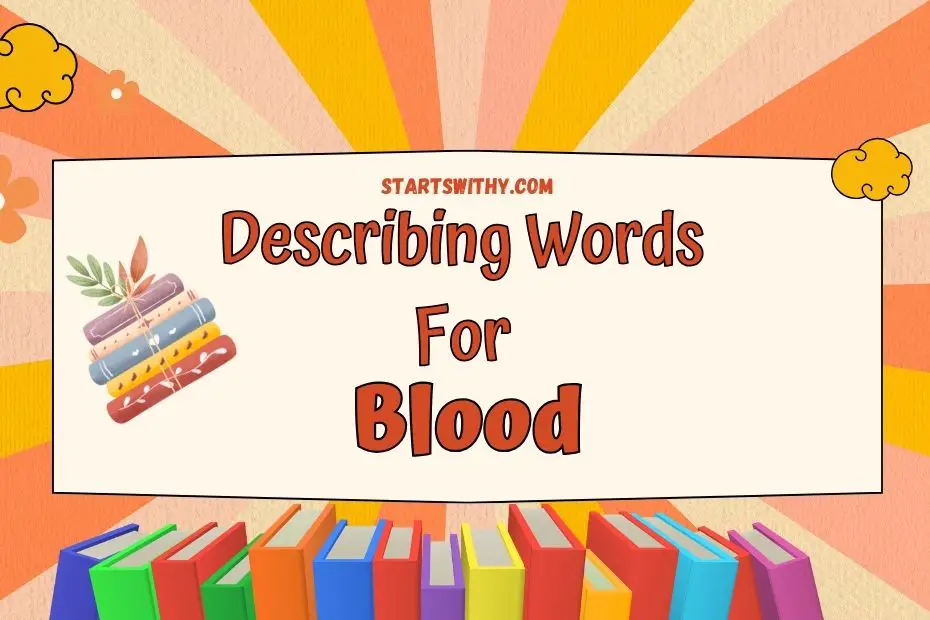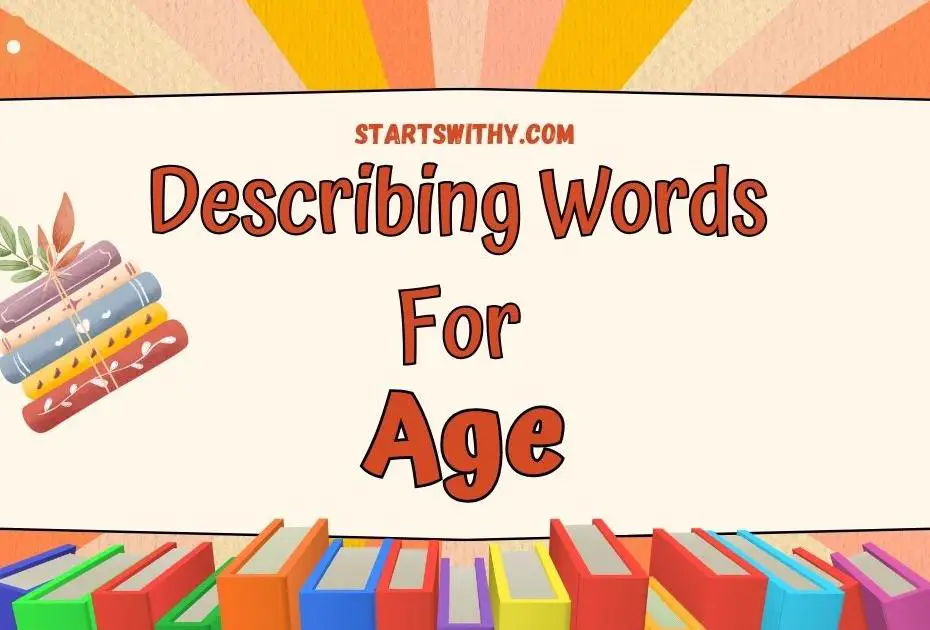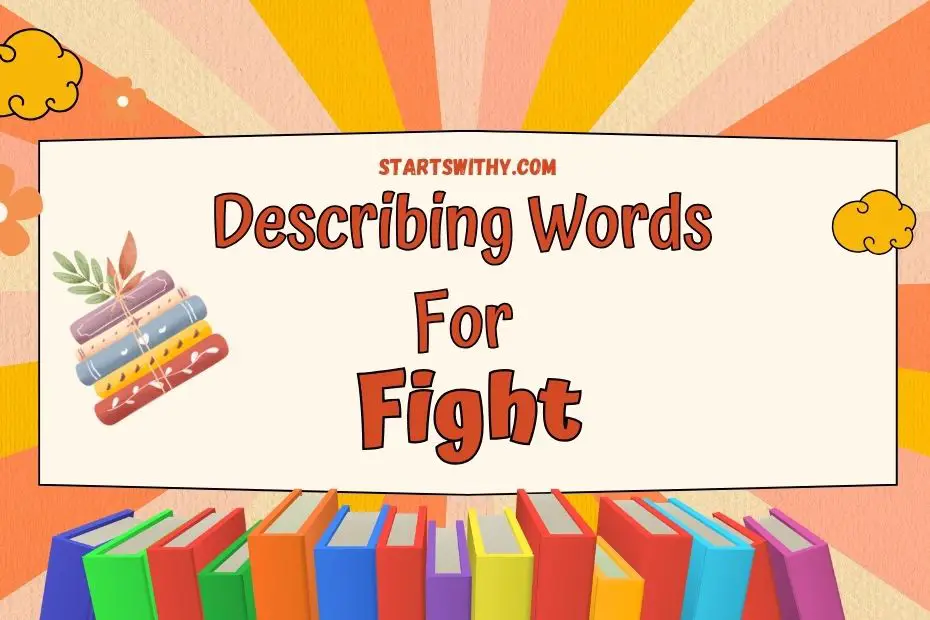When it comes to describing a picture, finding the right words can make all the difference. Whether you’re an artist, a photographer, or simply someone who appreciates visual beauty, having a diverse vocabulary of adjectives is essential. In this article, I’ll be sharing some of the most powerful and evocative adjectives that can help you capture the essence of a picture in words. From vibrant and mesmerizing to serene and nostalgic, these adjectives will allow you to paint a vivid picture with your descriptions. So, let’s dive in and explore the world of adjectives for pictures!
Pictures have the incredible ability to transport us to different places, evoke emotions, and tell stories without uttering a single word. However, sometimes words are necessary to convey the depth and impact of a picture. That’s where adjectives come in. With the right choice of adjectives, you can bring a picture to life and provide a unique perspective that complements the visual elements. In this article, I’ll be sharing a curated list of adjectives that will help you elevate your description game and provide a richer experience for your audience. So, get ready to discover the perfect adjectives to enhance your picture descriptions and captivate your readers.
How to Describe Picture? – Different Scenarios
When it comes to describing pictures, it’s important to consider the context and purpose. Different scenarios require different approaches and adjectives to effectively convey the essence of the image.
Here are some common scenarios and tips on how to describe pictures in each situation:
1. Describing a Landscape:
When describing a landscape picture, it’s essential to capture the beauty and grandeur of the natural surroundings. Use adjectives that evoke emotions and paint a vivid image in the reader’s mind. Here are some examples:
- Serene: The calm and peaceful nature of the landscape.
- Majestic: The grand and awe-inspiring beauty of the scenery.
- Idyllic: The picturesque and perfect nature of the surroundings.
2. Describing a Portrait:
Describing a portrait requires a focus on the subject’s features, expressions, and emotions. Choose adjectives that bring the person to life and convey their personality. Here are some examples:
- Radiant: Describing a happy and glowing expression.
- Captivating: Highlighting the spellbinding and enchanting quality of the portrait.
- Expressive: Conveying the depth and emotion captured in the subject’s face.
3. Describing an Action Shot:
Action shots are full of energy and movement. To effectively describe these pictures, use adjectives that emphasize the dynamic nature of the scene. Here are some examples:
- Thrilling: Conveying the excitement and adrenaline of the action.
- Dynamic: Describing the sense of motion and activity in the shot.
- Electrifying: Highlighting the intense and captivating nature of the action.
4. Describing a Still Life:
Still life pictures capture everyday objects arranged in a specific way. Use adjectives that bring attention to the composition, lighting, and overall mood. Here are some examples:
- Tranquil: Conveying a sense of calm and peacefulness.
- Meticulous: Describing the attention to detail in the arrangement of the objects.
- Timeless: Highlighting the enduring and classic nature of the still life.
Remember, the key to describing pictures effectively is to choose adjectives that create a visual and emotional impact. Experiment with different words to capture the essence of the image and engage your audience.
Describing Words for Picture in English
When it comes to describing pictures in English, choosing the right adjectives is essential. Adjectives help bring a picture to life, allowing us to paint a vivid mental image in the minds of our audience. Whether it’s a landscape, a portrait, an action shot, or a still life picture, using descriptive words can create an emotional impact and engage the viewers. Here are some useful adjectives that you can use to describe different types of pictures:
1. Landscapes
Landscapes often showcase the beauty of nature, and using descriptive adjectives can help transport the viewers to these stunning scenes. Consider using words like:
- Breathtaking: The view of the mountains was breathtaking.
- Picturesque: The picturesque landscape was filled with vibrant colors.
- Serenic: The serenic beach scene brought a sense of tranquility.
2. Portraits
Portraits capture the essence of people, their emotions, and their unique personalities. Here are some adjectives to describe portraits:
- Captivating: Her captivating gaze drew me in.
- Expressive: The portrait captured the subject’s expressive eyes.
- Genuine: The smile on his face looked genuine and heartwarming.
3. Action Shots
Action shots freeze a moment in time and convey movement or excitement. Use these adjectives to bring action shots to life:
- Dynamic: The dynamic shot showed the athlete mid-jump.
- Thrilling: The thrilling action shot left us on the edge of our seats.
- Energetic: The energetic dance move was captured perfectly.
4. Still Life Pictures
Still life pictures showcase inanimate objects and allow us to appreciate their beauty and detail. Consider these adjectives for still life pictures:
- Intricate: The still life painting had intricate details.
- Stunning: The stunning still life photograph captured the beauty of the flowers.
- Subtle: The use of light and shadow added a subtle charm to the still life composition.
Adjectives for Picture
Positive Adjectives for Picture with 10 Example Sentences
When it comes to describing pictures, using the right adjectives can make all the difference. By choosing positive adjectives, we can bring out the best in the images and create a captivating visual experience for the viewers. Let me share with you 10 example sentences that showcase positive adjectives for various types of pictures:
- The breathtaking landscape stretched out before me, filled with vibrant colors and majestic mountains.
- The charming portrait captured the innocence and beauty of the subject, with a warm smile and sparkling eyes.
- In the action shot, the athlete had an explosive leap, showcasing strength and agility.
- The still life picture portrayed a serene scene with delicate flowers and soft lighting.
- With its captivating composition, the picture drew the eyes to the focal point, leaving a lasting impression.
- The glorious sunset painted the sky with hues of orange, pink, and purple, creating a truly magical scene.
- The wildlife photograph captured the majestic presence of the lion, with its fierce gaze and powerful stance.
- The picture of the bustling city exhibited an energetic atmosphere, with busy streets and vibrant lights.
- The radiant smile on the subject’s face in the portrait conveyed pure happiness and joy.
- The picture evoked a sense of serenity and tranquility, with a peaceful beach and gentle waves crashing on the shore.
Negative Adjectives for Picture with 5 Example Sentences
While positive adjectives can enhance the beauty of a picture, negative adjectives can be useful in certain contexts as well. They can help create a mood, convey a message, or highlight a specific aspect of the image. Here are five example sentences showcasing negative adjectives for pictures:
- The desolate landscape was devoid of life, with barren trees and an eerie stillness.
- The portrait captured the subject’s haunting expression, revealing deep sadness and longing.
- In the action shot, the athlete had a disastrous fall, capturing the moment of defeat and disappointment.
- The still life picture depicted decaying fruit, symbolizing the passage of time and the impermanence of life.
- The picture evoked a feeling of dreadful darkness, with stormy clouds and a foreboding atmosphere.
Remember, the choice of adjectives can greatly impact how the viewers perceive and connect with the pictures. Experiment with different words to capture the essence of the image and evoke specific emotions. Whether you use positive or negative adjectives, it’s all about creating a visual and emotional impact that engages the audience.
Synonyms and Antonyms With Example Sentences
Synonyms for Picture
When it comes to describing pictures, using a variety of adjectives can make a big difference in how we convey emotions and capture the attention of the viewer. Below are some synonyms that can help you expand your vocabulary and add more depth to your descriptions:
| Adjective | Meaning | Example Sentence |
|---|---|---|
| Beautiful | Pleasing to the eye | The beautiful sunset painted the sky with vibrant colors. |
| Breathtaking | Astonishingly stunning | The view from the mountaintop was breathtaking. |
| Captivating | Fascinating and captivating | The captivating portrait held my gaze for a long time. |
| Mesmerizing | Hypnotic and enchanting | The mesmerizing dance performance left the audience spellbound. |
| Scenic | Picturesque and scenic | We explored the scenic countryside on our road trip. |
Antonyms for Picture
While positive adjectives are commonly used to describe pictures, there are times when we might want to convey a different mood or create contrast. Here are some antonyms that can help you add depth and variation to your descriptions:
| Adjective | Meaning | Example Sentence |
|---|---|---|
| Dark | Lacking light or brightness | The dark storm clouds added a sense of foreboding to the picture. |
| Dull | Lacking interest or excitement | The dull and monotonous landscape failed to capture my attention. |
| Uninspiring | Lacking creativity or stimulation | The uninspiring still life painting did not evoke any emotion. |
| Ordinary | Common and unremarkable | The ordinary snapshot did not stand out among the others. |
| Lifeless | Lacking vitality or energy | The lifeless expression on the subject’s face made the portrait appear flat. |
Remember, using a mix of positive and negative adjectives can help you create a more nuanced and engaging description of a picture. Experiment with different words to evoke specific emotions and capture the attention of your audience.
Next, let’s move on to exploring how certain adjectives can be used to describe specific types of pictures.
Conclusion
Choosing the right adjectives to describe pictures is crucial in capturing the attention and evoking the desired emotions in viewers. As we have explored in this article, adjectives play a significant role in shaping how people perceive and connect with images.
By providing a comprehensive list of synonyms and antonyms for describing pictures, along with example sentences, we have empowered readers to expand their vocabulary and experiment with different words. This allows them to create a more vivid and engaging description that resonates with their audience.
As we move forward, it is important to remember that adjectives are not just random words thrown together. They have the power to enhance the visual experience and convey specific emotions. By understanding the impact that adjectives have on pictures, we can effectively communicate our intended message and elicit the desired response from viewers.
In the next section, we will delve deeper into how certain adjectives can be used to describe specific types of pictures. Stay tuned as we explore the fascinating world of adjective usage in picture descriptions!



